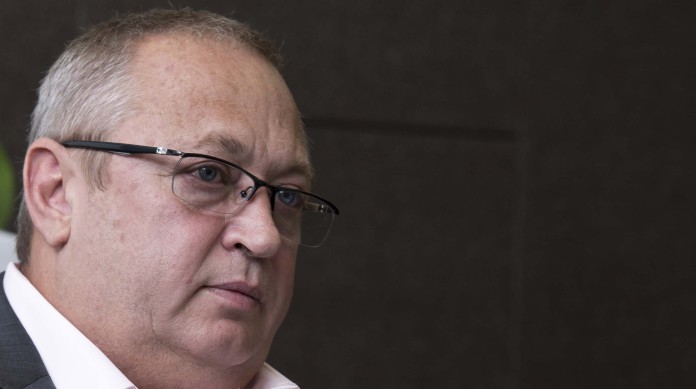
THE price of uranium was due a major breakout in the medium-term – a development that would support Sibanye-Stillwater’s plans to embark on commercial production of the mineral, said the group’s CEO, Neal Froneman.
Sibanye-Stillwater announced at its half year results presentation last month that it intended to mine the Beisa uranium resources at its Beatrix West operation as a way of extending the Free State province mine’s life, currently set at about five more years. Beatrix West was developed by Gencor, the former mining house, during the Eighties at a then cost of R2.6bn with a view to producing uranium.
Froneman added today at a presentation of the firm’s gold and ESG strategy that the retreatment of major uranium resources at its Johannesburg West gold operations by its 50.01%-owned DRDGOLD would be undertaken in tandem with the extension of Beatrix.
Niel Pretorius, CEO of DRDGOLD said his company intended to stay “in the slipstream” of Sibanye-Stillwater by moving into green metal and mineral retreatment activities.
For instance, the second phase development of DRDGOLD’s Far West Gold Recoveries (FWGR) project would encompass the retreatment of uranium slag, he said.
Design of FWGR was extensive enough to include uranium, but implementation would be “phased”, said Pretorius. Sharing of infrastructure over gold and uranium production would “dilute” the capital expenditure demands on the company, he said.
Uranium price hopes
The development of Beisa, and the diversification of DRDGOLD’s retreatment activities into uranium, would be supported by a burgeoning uranium price, said Sibanye-Stillwater.
“In terms of the uranium price, I think any metal that is part of the low- or zero-carbon emission base is going to be in short supply over 10 or 15 years,” said Froneman.
“There is such a shortage of these green metals. I predict very significant price rises for lithium and nickel, and uranium is part of those green metals. We are being very conservative talking $60 per pound ($/lb),” he added.
According to an article by Bloomberg News today, the uranium price was at its highest level since 2014 ($40.25/lb) owing to aggressive purchasing by Canadian investor, Sprott Inc which intended to corner the phyiscal market for uranium.
Said Froneman: “If you can produce the greenest uranium – and of course tailings retreatment is going to be very much part of that – you have a real edge. We are looking forward over the medium term to much higher uranium prices.”
Gold/Uranium combination
In terms of producing uranium with additional gold resources, Froneman said: “Absolutely, it can be done together”.
He referred to the acquisition of JSE-listed gold exploration company, Wits Gold by Sibanye-Stillwater forerunner, Sibanye Gold in 2013. Wits Gold owns the Bloemhoek and the De Bron Merriespruit gold prospects situated in the southern Free State.
These projects were the type that “… could come to fruition” especially given the development of technology – a view endorsed by Sibanye-Stillwater’s long-time adviser Dennis Tucker who is now in charge of the group’s uranium strategy.
“The Free State uranium assets are key,” said Tucker. “They have been mined before; they are shallow; there are some really exquisite, new-age, autonomous mechanisms out there that will us to access those orebodies rapidly,” he said.
The Beisa project was “ready to roll”, said Tucker who added that Sibanye-Stillwater was studying a cost analysis of the companies, and of Beatrix itself to see if up to three projects could be added on to the mine.
In the southern Free State mining right there were “a couple of really interesting gold projects that will add value to company under a different cost structure. There is serious life in the Free State and it is our intention to fully unlock this and take it to another level,” said Tucker.
The uranium price was in “a completely different space”, he said.
“It’s green energy now,” he said of uranium. “It’s not the old energy that everyone was afraid of. It’s going to become the baseload of the planet and on the back of that we will see some surprising price moves.”









